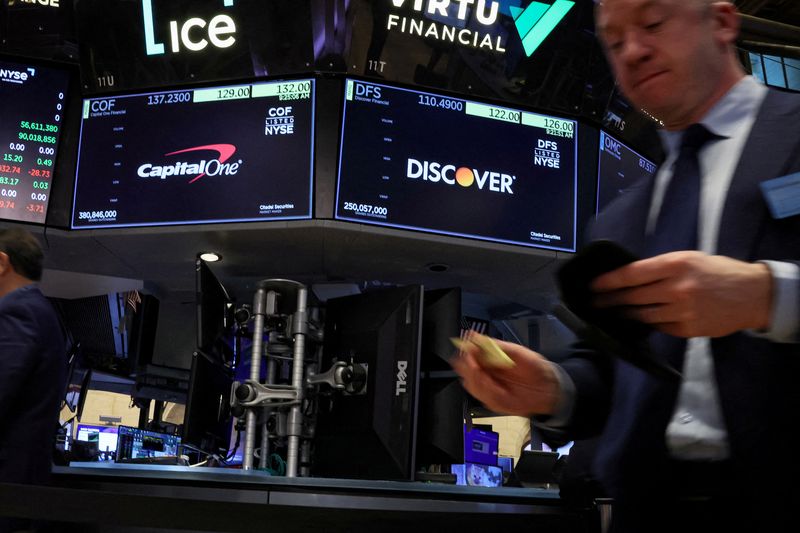Microsoft’s data-center shortages to persist longer than expected - Bloomberg
Investing.com -- Capital One Financial Corporation (NYSE:COF) beat Wall Street’s profit expectations for the second quarter, delivering robust adjusted earnings even as it reported a headline net loss tied to the recent Discover acquisition. The $35.3 billion all-stock deal, completed in May, transformed Capital One into the nation’s largest credit card issuer by balances.
Adjusted earnings per share came in at $5.48, well ahead of the $4.03 analysts had anticipated. On a GAAP basis, however, the bank posted a $4.3 billion loss, or $8.58 per share, largely due to an $8.77 billion initial allowance build for Discover’s non-PCD loans.
Revenue climbed 25% from the previous quarter to reach $12.5 billion but narrowly missed the consensus estimate of $12.72 billion. The integration of Discover’s assets also drove sharp increases in both loans and deposits.
Capital One shares rose 3.4% in premarket trading Wednesday.
"While there is a lot of noise in Q2 reporting from acquisition integration costs, the overall story remains compelling, in our view," Bank of America analysts said in a post-earnings note.
"We see significant optionality around the closed loop network that could materially enhance the product offering and competitive positioning of Capital One," they added.
Period-end loans rose 36% to $439.3 billion, with credit card balances jumping 72% to $269.7 billion. Total (EPA:TTEF) deposits climbed 27% to $468.1 billion, bolstering the firm’s liquidity position.
“We completed our acquisition of Discover on May 18th. We’re fully mobilized and hard at work on integration which is going well,” said Richard D. Fairbank, Capital One’s Chairman and CEO.
The credit card and consumer lending divisions posted the most dramatic growth, alongside a solid capital buffer: the bank’s CET1 ratio stood at 14.0% at quarter’s end. Net interest margin increased 69 basis points to 7.62%, underpinning profitability in a high-rate environment.
Non-interest expense jumped 18% to $7.0 billion as the bank absorbed one-off acquisition and integration costs. These included $299 million in direct Discover integration expenditures and $255 million related to intangible amortization.
“We’re as excited as ever by the expanding set of opportunities to grow and create value as a combined company,” Fairbank said. The company projects $2.7 billion in deal synergies by 2027, and it continues to invest in its digital infrastructure to drive operating efficiency.
Morgan Stanley (NYSE:MS) analysts said they had hoped for more clarity this quarter on Capital One’s internal capital targets but will likely need to wait another quarter.
“We still believe COF can ramp buybacks modestly starting this quarter now that the deal has closed, with a more meaningful ramp in Q4 once COF completes its internal capital review," they added.
(Additional reporting by Vahid Karaahmetovic.)
